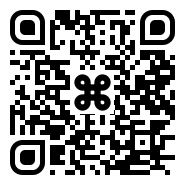|
Crossway
Period
Modern
Category
Board, Space, Connection
Description
The most elegant drawless square connection game. Stones possess orthodiagonal connectivity, and crosscuts are disallowed.
Rules
Crossway is played with a Go set. The board starts out empty. Each player takes possession of all of the stones of one color. Players take turns adding their stones to the board, one stone per turn. A player must never create a crosscut formation. Black makes the first placement of the game. If you have no more available placements, you forfeit your turn and your opponent can continue making placements until completing his goal connection. For White to win, White must form a contiguous sequence of white stones connecting the West edge to the East edge of the board. Each stone in the sequence must be connected to neighboring stones in the sequence by horizontal, vertical, or diagonal adjacencies. Likewise for Black and the North and South edges. A corner is considered to be part of both adjoining edges. Crossway makes use of the pie rule. This means Black makes the first placement, and White has the option of switching colors with Black, and claiming Black's first move as his own. If White chooses to exercise the pie rule, Black then becomes White and now makes the second placement of the game. The pie rule can only be used once and on the second move of the game.
Author
Mark Steere
Creation date
2007
Ludeme Description
Crossway.lud
Concepts
Browse all concepts for Crossway here.
Reference
Mark Steere Games
Similar Games
Identifiers
DLP.Games.890
BGG.30517

|